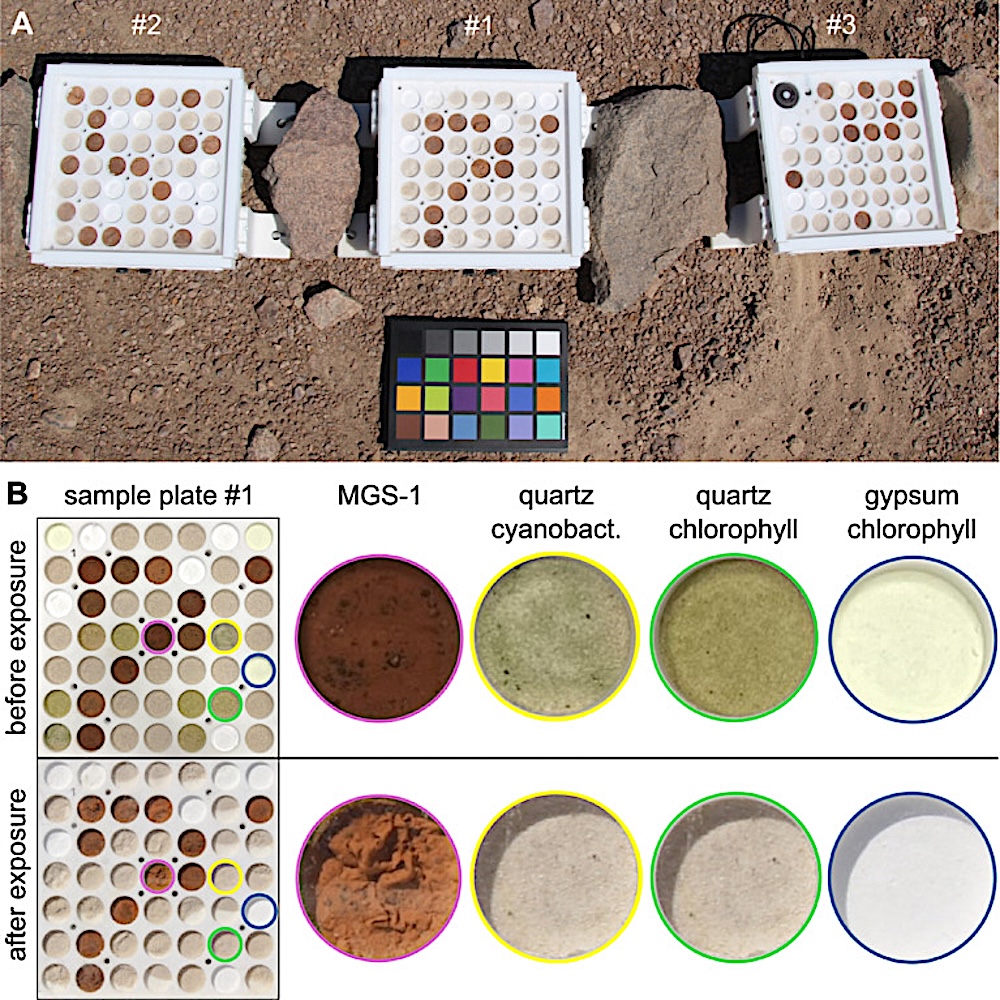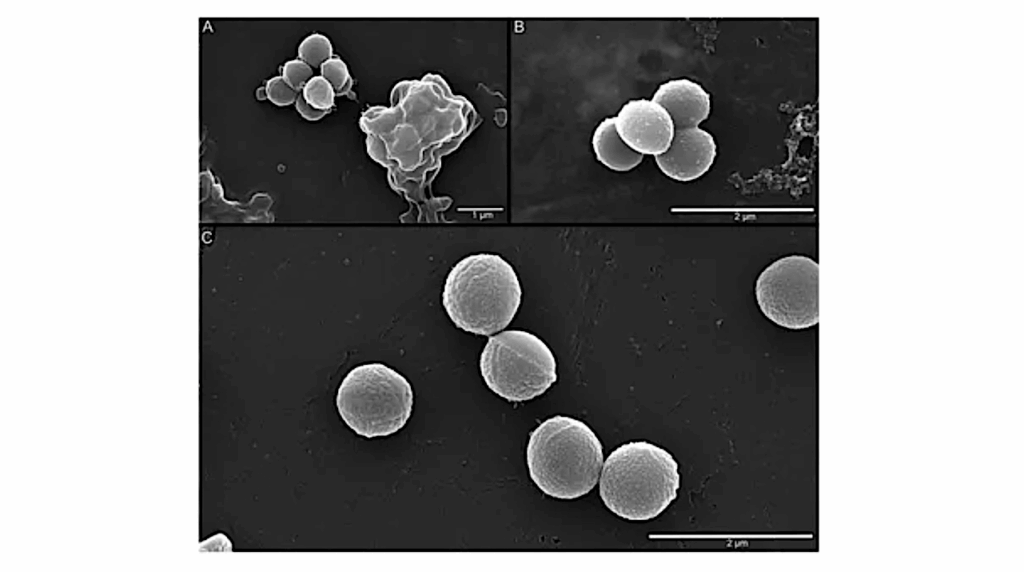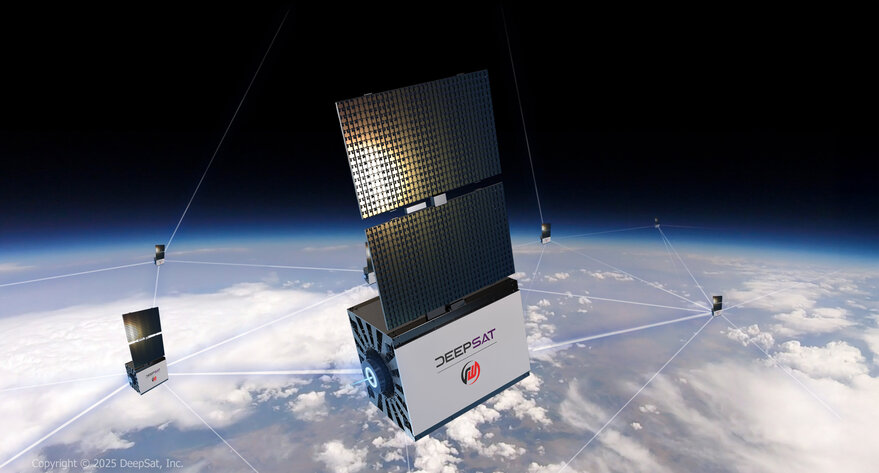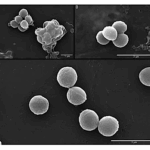Now Reading: Exploring Organic Compound Preservation Through Long-term In Situ Experiments In The Atacama Desert And The Relevance For Mars
-
01
Exploring Organic Compound Preservation Through Long-term In Situ Experiments In The Atacama Desert And The Relevance For Mars
Exploring Organic Compound Preservation Through Long-term In Situ Experiments In The Atacama Desert And The Relevance For Mars


(A) Exposure experiment in the Atacama Desert 2 months after setup (Plate #1 was exposed 2 months, plate #2 4 months, and plate #3 8 months, an additional plate remained as a control unexposed in the lab). In the upper left corner of plate #3, the sensors for environmental monitoring are built in. Color reference card (20 × 15 cm) placed below as reference. — Science Reports via PubMed
The preservation of organic compounds under extreme environmental conditions remains a critical challenge for both terrestrial ecology applications on Earth and astrobiology.
In a novel long-term field experiment over 8 months, we exposed biomolecules and a model organism to natural hyperarid conditions of the Atacama Desert, one of the best Mars analog environments.
We used custom-designed sample plates for long-term exposure to simulate environmental stresses that biomolecules are exposed naturally in a hyperarid environment. The multiple stressors included extreme temperature fluctuations, associated humidity changes, and intense solar irradiation.
Our field experiment complements and extends the insights obtained from previously conducted short-term laboratory experiments. To investigate biomolecule stability, we embedded adenosine triphosphate (ATP), chlorophyll-a, and the cyanobacterium Chrooccoccidiopsis in various Mars-relevant sediments with addition of chloride and perchlorate.
Our findings, which include the rapid degradation of these biomolecules, the detection of more stable degradation products, and the identification of non-enzymatic degradation pathways, reveal the critical influence of substrate and salt types on biomolecule stability.
Valuable insights into biosignature preservation under extreme terrestrial conditions and a better understanding of organic signal interpretations were gained, which will provide critical insights for future Mars missions, especially when searching for past or present life.

(A) Exposure experiment in the Atacama Desert 2 months after setup (Plate #1 was exposed 2 months, plate #2 4 months, and plate #3 8 months, an additional plate remained as a control unexposed in the lab). In the upper left corner of plate #3, the sensors for environmental monitoring are built in. Color reference card (20 × 15 cm) placed below as reference. (B) Sample plate #1 before (upper row) and after 2 months exposure (lower row): Examples of visible alteration are taken from MGS-1, which shows morphological deformation; the cyanobacterial samples and chlorophyll samples (in quartz and gypsum substrate) which had before exposure a greenish color has bleached completely. — Science Reports via PubMed
Exploring organic compound preservation through long-term in situ experiments in the Atacama desert and the relevance for Mars, Science Reports via PubMed
Astrobiology
Stay Informed With the Latest & Most Important News
-
 012024 in Review: Highlights from NASA in Silicon Valley
012024 in Review: Highlights from NASA in Silicon Valley -
 02Panasonic Leica Summilux DG 15mm f/1.7 ASPH review
02Panasonic Leica Summilux DG 15mm f/1.7 ASPH review -
 03How New NASA, India Earth Satellite NISAR Will See Earth
03How New NASA, India Earth Satellite NISAR Will See Earth -
 04And Thus Begins A New Year For Life On Earth
04And Thus Begins A New Year For Life On Earth -
 05Astronomy Activation Ambassadors: A New Era
05Astronomy Activation Ambassadors: A New Era -
06SpaceX launch surge helps set new global launch record in 2024
-
 07Space Force plans new ‘Futures Command’ amid pressure to speed up modernization
07Space Force plans new ‘Futures Command’ amid pressure to speed up modernization

















